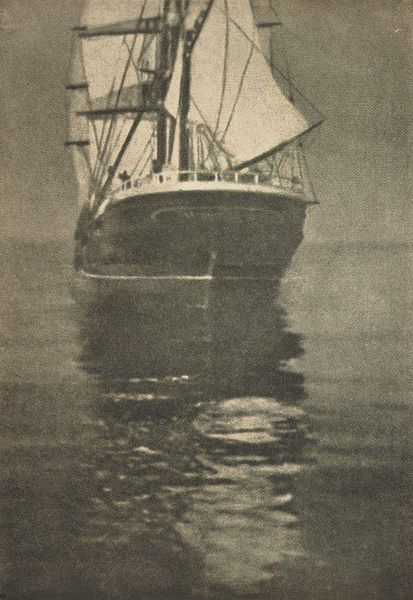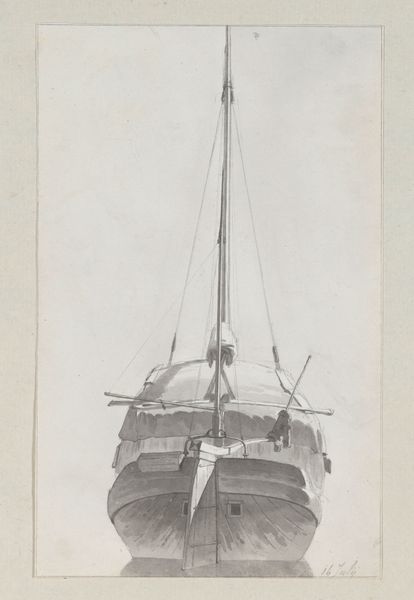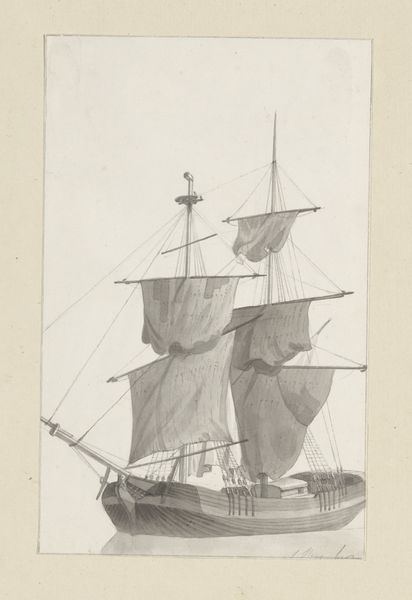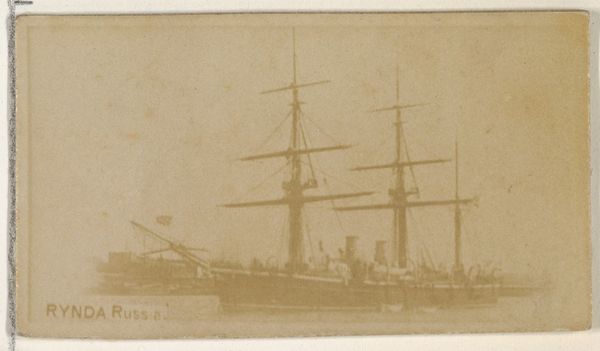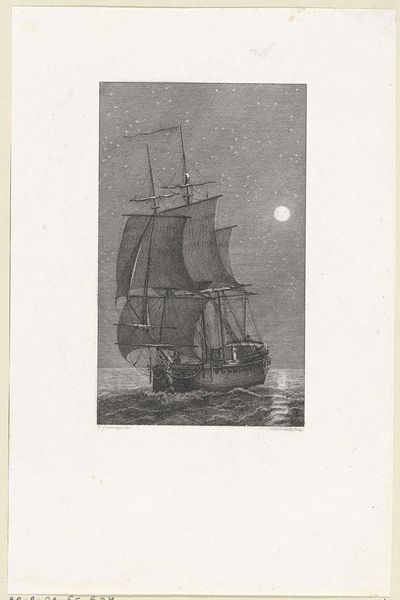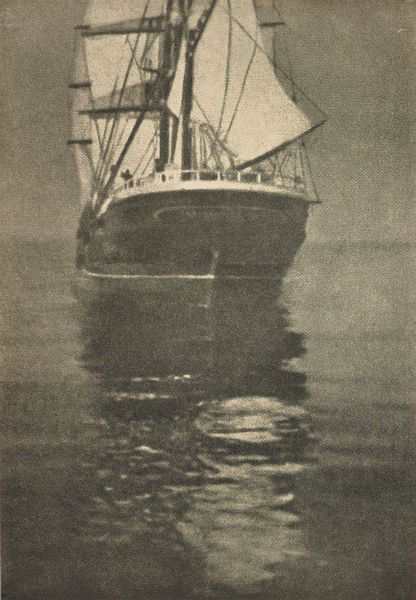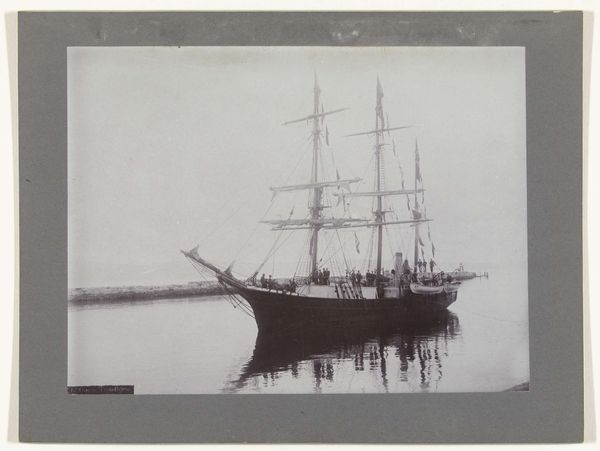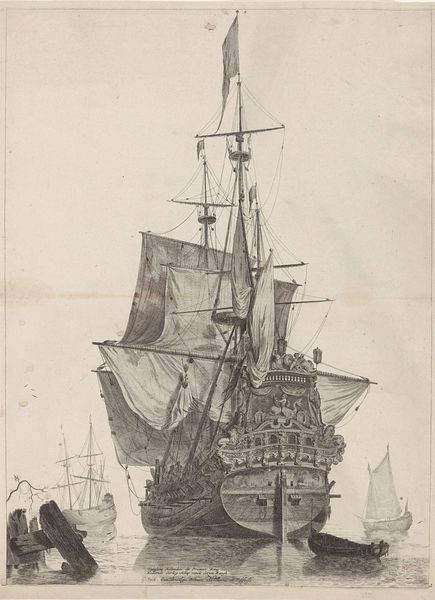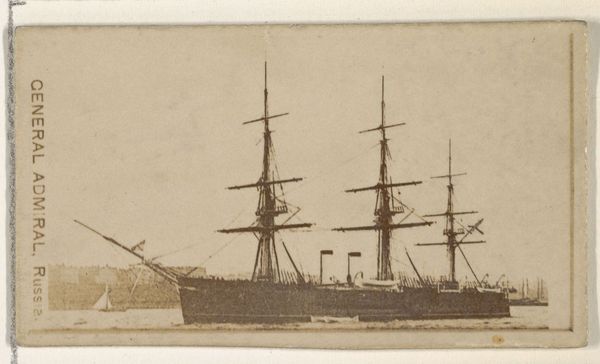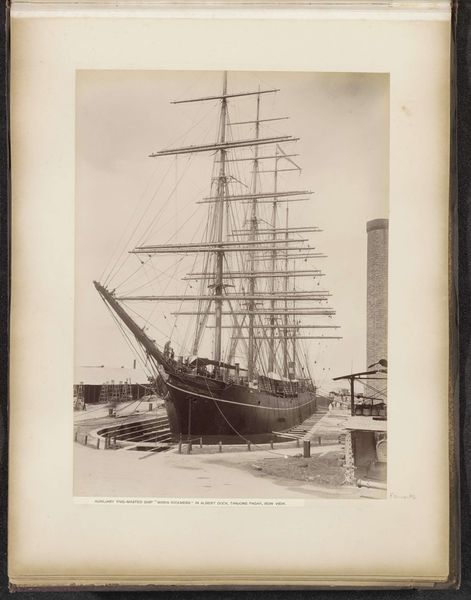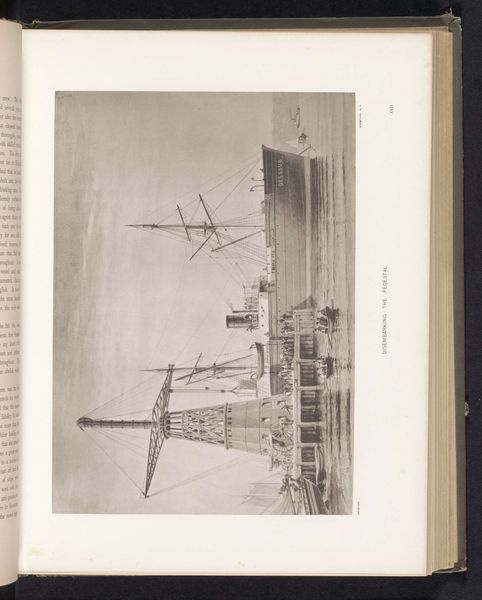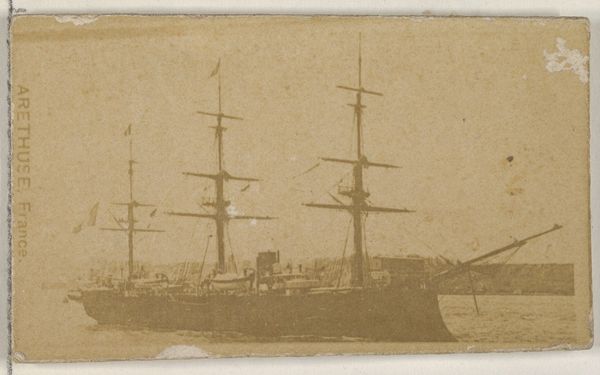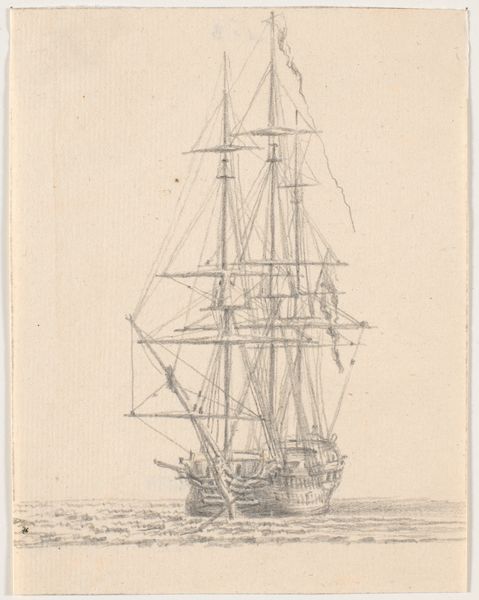![Untitled [ship at wharf] by William J. Mullins](/_next/image?url=https%3A%2F%2Fd2w8kbdekdi1gv.cloudfront.net%2FeyJidWNrZXQiOiAiYXJ0ZXJhLWltYWdlcy1idWNrZXQiLCAia2V5IjogImFydHdvcmtzLzljOTYzNGNlLWI0OGItNGIzYS05YTBmLTJmM2EyMmEwZWVhZS85Yzk2MzRjZS1iNDhiLTRiM2EtOWEwZi0yZjNhMjJhMGVlYWVfZnVsbC5qcGciLCAiZWRpdHMiOiB7InJlc2l6ZSI6IHsid2lkdGgiOiAxOTIwLCAiaGVpZ2h0IjogMTkyMCwgImZpdCI6ICJpbnNpZGUifX19&w=1920&q=75)
photography, gelatin-silver-print
#
landscape
#
photography
#
pencil drawing
#
gelatin-silver-print
#
cityscape
#
realism
Dimensions: 3 13/16 x 2 7/8 in. (9.68 x 7.3 cm) (image)5 1/2 x 4 3/16 in. (13.97 x 10.64 cm) (mount)
Copyright: No Copyright - United States
Editor: Here we have William J. Mullins's "Untitled [ship at wharf]," a gelatin silver print from 1900. It’s a rather muted, grey image. I’m immediately drawn to the contrast between the intricate rigging of the ship and the solid, boxy shapes of the wharf buildings. What stands out to you, looking at this piece? Curator: The tonal range here is exquisitely controlled, isn't it? Note how Mullins utilizes the varying densities of the gelatin silver to establish a sense of depth, despite the shallow focal plane. The near-monochromatic palette underscores the geometric relationships between the ship's masts and the angular architecture. Consider how the artist deliberately blurs the line between representation and abstraction, prompting a contemplation on form itself. Editor: So you’re saying the details are less important than the shapes and the way they relate to each other? Curator: Precisely. Disregard for a moment the depicted objects. What remains? An interplay of vertical and horizontal lines, softened by the atmospheric haze. The artist seems interested in exploring the fundamental elements of visual structure—line, tone, texture—almost independently of their representational function. Do you see how the eye is guided through the composition, tracing those structural lines? Editor: I do, especially the way the masts pull your eye upwards, but then the horizontal lines of the wharf bring it back down. So the mood almost becomes secondary to the form itself? Curator: Exactly! The emotional tone emerges *from* this arrangement of forms. One might even argue that Mullins invites us to perceive the aesthetic value of industrial landscapes. By distilling his subject to its bare structural components, he compels us to reconsider what constitutes beauty and meaning in art. What has this approach revealed for you? Editor: It’s given me a completely new appreciation for black and white photography as a structured composition. Curator: And for me, it reaffirms the timeless power of formal analysis to unlock hidden depths in even seemingly simple works.
Comments
No comments
Be the first to comment and join the conversation on the ultimate creative platform.
